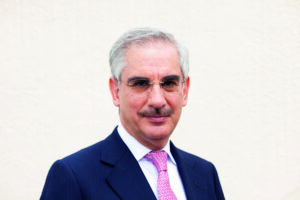
Interventional radiology (IR) is unique amongst procedural disciplines because its ‘parent specialty’ is a diagnostic discipline that has no infrastructure for clinical practice. Charles Dotter, who performed the first angioplasty on 16th January 1964, recognised the risks inherent in this unique situation, stating: “If my fellow angiographers prove unwilling or unable to accept clinical responsibilities, they face forfeiture of territorial rights based solely on imaging equipment others can obtain and skills that others can learn.”
IR requires four sets of skills: first, its practitioners need to be able to interpret the radiological images that they need for their procedures. Second, they must have sufficient manual dexterity to master the necessary techniques. Third, they need to understand the pathology, physiology, and clinical aspects of the diseases that they encounter. Finally, they need to be able to assess a clinical situation and decide how best to treat the patient, sometimes quickly and based on incomplete information. The first two requirements pose no significant challenges. Image interpretation is the essence of radiology. And although not all radiologists are particularly dextrous, many have the practical skills for the performance of common interventional radiological procedures. Knowledge of pathology, physiology and clinical medicine is more problematic. In some countries, including the UK, substantial clinical experience used to be expected before beginning radiological training.
In the 20th century, many British radiologists had a formal qualification in internal medicine before radiology training, but this is now unusual. As imaging became more complex, many training organisations sacrificed clinical experience in favour of more lengthy training in radiology. The ability to make swift decisions about treatment is a substantial challenge. Most diagnostic radiologists are thinkers and problem-solvers. Radiology attracts people who enjoy detecting abnormalities and using the related clues to suggest a possible diagnosis. This is a complex and immensely valuable skill and has placed imaging at the heart of modern medicine. Most radiologists have the mindset of a physician rather than a surgeon. A “surgical mindset”, however, is much more useful in IR, and not only because timely action is necessary in emergency situations. Diagnostic radiologists are not usually required to make decisions on clinical management: their role is to provide accurate information which informs decisions taken by others. Interventional radiologists must consider the risks and potential benefits of intervention, which often depend on the likelihood of success of the intended procedure.
For a few decades after the discovery of X-rays in 1895, radiotherapy and diagnostic radiology were practised within the same specialty. Radiation oncology separated from diagnostic radiology in the middle decades of the twentieth century. One important reason for the separation was that both disciplines had increased in complexity, making the volume of the required knowledge too great for one specialty. But there was also an obvious need for different patterns of practice. Radiation oncologists must work as clinicians. Although this is just as true of IR in most countries, it remains an integral part of radiology. Even in the USA, where it is recognised as a primary specialty, and in the UK, where it is a formally accredited subspecialty of radiology, those training to be interventional radiologists spend much of their time learning imaging rather than clinical and procedural skills. And most interventional radiologists spend a lot of their time reading diagnostic imaging studies unrelated to the patients they are treating.
A true clinical specialty of IR would make a huge contribution to contemporary patient care. Its practitioners would spend more of their training years learning clinical and procedural skills, rather than irrelevant facts about aspects of imaging they are unlikely to encounter in their daily practice. They would have the appropriate supporting staff and infrastructure to hold outpatient clinics. They would attend tumour boards as treating physicians and not as imagers, which would allow the procedures that they can offer to be explained fully and to be considered alongside other mainstream treatments rather than as ‘optional extras.’
The current pattern of practice is a barrier to interventional oncology’s expansion. It is not unusual for patients to be deemed suitable for ablation, to then undergo surgery.. This happens because enthusiastic young surgeons see the patients afterwards and persuade them to have surgery, genuinely believing that this is best treatment for them. The solution would be to hold joint clinics. But this could happen only if interventional radiologists spent more of their time seeing patients and less interpreting diagnostic studies.
The arguments in favour of IR being a primary clinical specialty are compelling. After all, radiation oncologists are just as dependent on imaging as interventional radiologists but would find it impossible to serve their patients well without being able to practise as
true clinicians.
Many interventional radiologists do not receive systematic training in all the procedures that they undertake in routine practice, especially the more complex ones. The disproportionate emphasis on diagnostic radiology training precludes the acquisition of sufficient clinical experience. The examination of the European Board of Interventional Radiology (EBIR) under the auspices of the Cardiovascular and Interventional Radiological Society of Europe (CIRSE) is a commendable effort but is a ‘voluntary supplemental examination’ which cannot be compared with equivalent tests undertaken by surgeons in their own disciplines. Interventional radiologists could point out that vascular surgeons undertaking IR procedures could be trained better, but that does not excuse the
lack of a more robust system of training in IR.
The greatest responsibility for the failure of IR to establish itself as a real clinical specialty lies with institutions responsible for establishing curricula for training and holding examinations. The best decisions in medicine, whether large or small, are taken when considered from the patient’s perspective. Presidents and deans of radiological colleges should imagine that they are lying on a computed tomography (CT) table and are about to have percutaneous ablation of a small renal tumour. They have been asked to choose between two newly appointed staff interventional radiologists available to perform this procedure. One of them had two years of clinical experience, followed by three years of training in diagnostic radiology, which included studying subjects such as the appearance of unusual bone tumours, minutiae of mammography and details of interstitial lung disease. Then, as he was fortunate enough to train in a country where IR is recognised as a subspecialty, he studied this discipline for two years. This was far too short a period to master percutaneous ablation. This would be his first unsupervised procedure. The patient met this person only once, just before entering the CT unit, when informed consent was given. All previous clinical contact was through the patient’s oncologist, who is also going to be responsible for the patient’s care in hospital and the post-procedure follow up–an arrangement that can cause delays and confusion in dealing with recurrent or residual tumour.
The second interventional radiologist has followed a curriculum established by a fictional college. After two years’ clinical training, she entered a dedicated course in IR, learning the aspects of imaging relevant to her chosen specialty. She studied, in detail, the procedures and equipment used in IR, and learned clinical skills, assisting her trainers with ward rounds and outpatient clinics. By the time she was appointed as permanent staff, she had carried out 20 percutaneous ablations.
A primary clinical specialty of IR should have appropriate supporting staff and facilities, including dedicated CT equipment and other machines specially designed to guide procedures rather than provide images for diagnosis. Sharing CT units between diagnostic and interventional radiologists is as inefficient as running an outpatient clinic in an operating room. A more intense focus on the procedural and clinical skills required in IR would serve patients very well.













